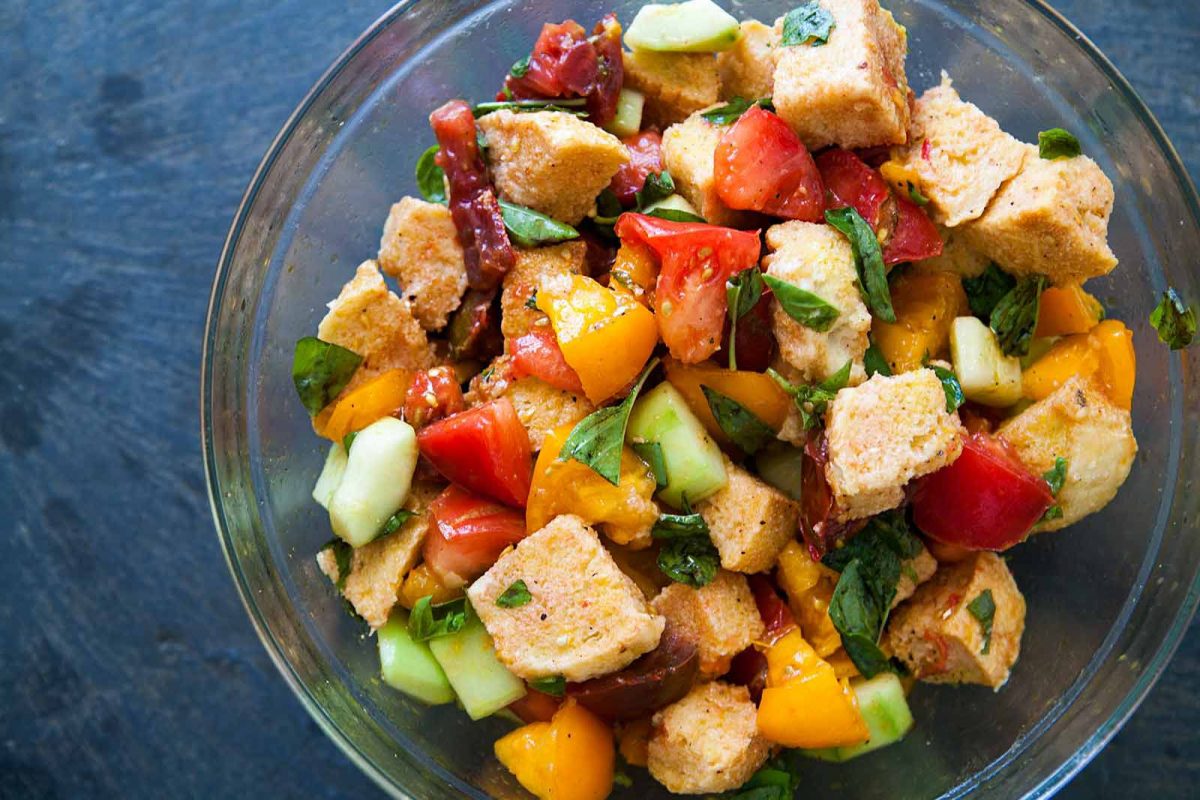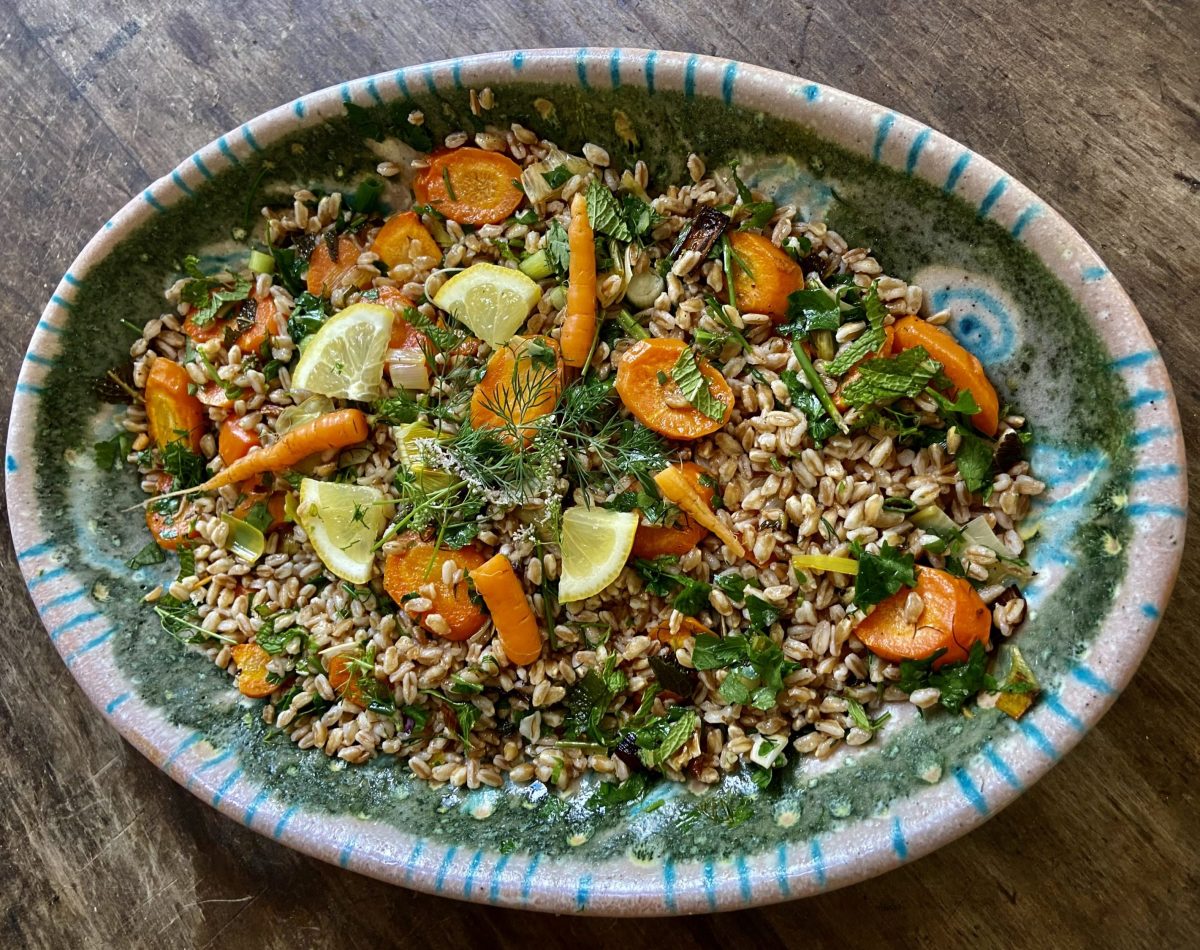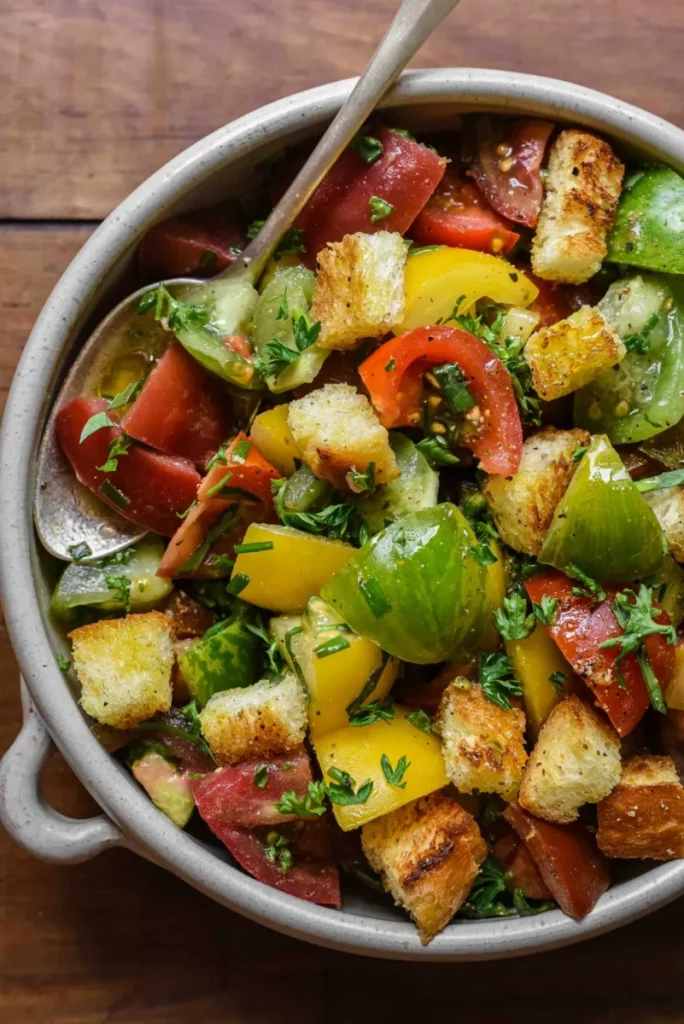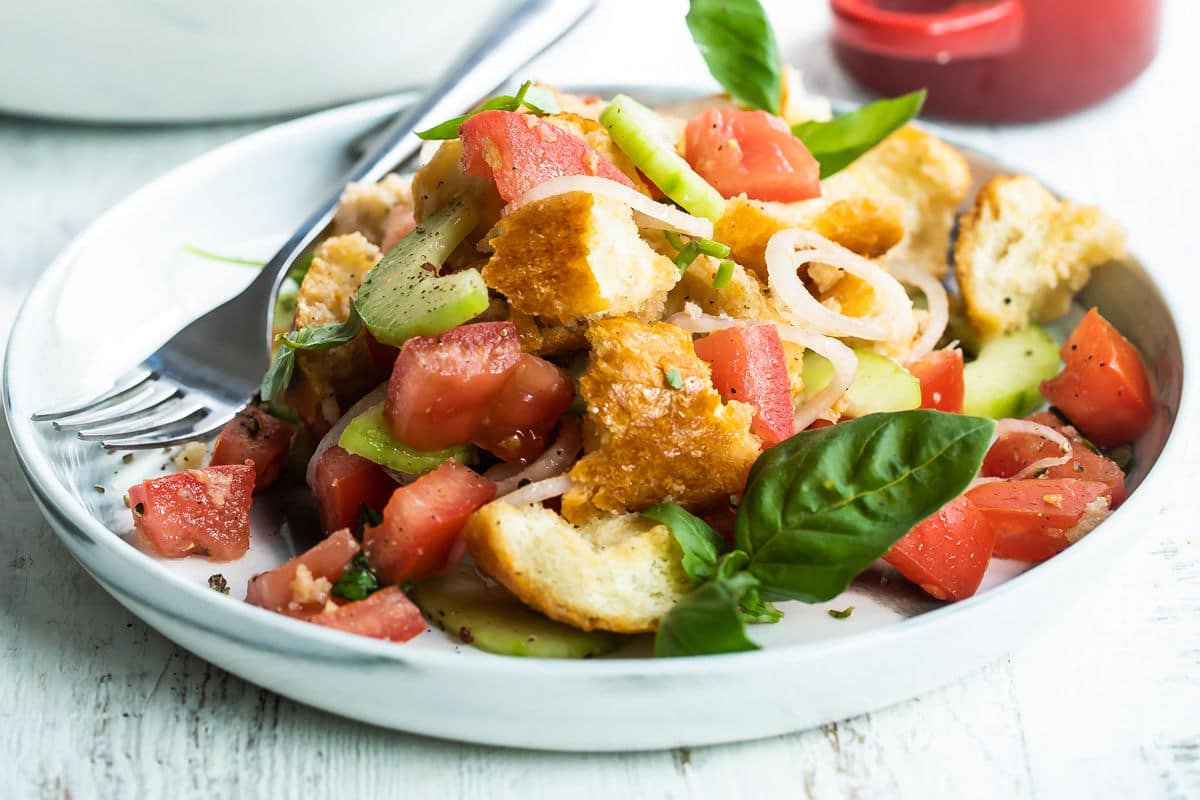My bread salad with fresh herbs is what the Italians call Panzanella. Freshly chopped herbs like mint, flat-leaf parsley, basil, and tarragon taste especially crisp and reviving when combined with crusty toasted Arabic bread. Your palette is teased by the tart feta, crunchy walnuts, and fruity pomegranate seeds. This salad is finished with a somewhat sour dressing made from pomegranate pulp, olive oil, golpar, sumac, salt, and pepper. The bread salad has a flavorful, fresh flavour and is satisfying and quite healthful. I enjoy presenting it as a refreshing, light lunch on hot summer days. It works well with rice and meat meals as a side dish or as a maze (mezze). My Bread Persian Beauty Salad with Fresh Herbs is the ideal option for you if you’re seeking for a tasty and simple summer dinner.
What is Persian Dooymaj?

This meal, which goes by the names Doymaj or Dooymaj and is often served as a cold dumpling, has its origins in Qazvin, Persia. In its place, I offer a Bread Salad with Fresh Herbs. We use old, dry lavash bread in the traditional doymaj recipe, but I toasted fresh Arabic bread in the oven. We usually have fresh lavash bread on hand, and while it is often consumed, occasionally there are some that are left behind. Our culture considers bread to be sacred, thus we prefer to dry it rather than discard it.
Old, dry lavash bread is crushed and mixed with fresh herbs to give it flavour. There are also numerous varieties of doymaj depending on the location, such as In Qazvin, other ingredients are also used, including turmeric, some water, and roasted onions (piaz dagh). Everything is combined, let to soak in the refrigerator, and then made into a chilled dumpling. In Tabriz, many substitute dugh, or yoghurt, for water. Check out my recipe for the Arabic bread salad called fattoush.
Heath Aspects of Herbs:

Herbs are often used in far greater amounts in the United States than you may be aware of. In comparison to our nation, Germany, a bundle of herbs weighs around three times as much, or 60 to 100g. Although I used my own garden for the salad’s herbs, you can find them in bigger amounts at any Turkish or Arabic grocery shop.
Effect Of Peppermint:
According to Teb-e Sonati, an Iranian traditional medicine, peppermint provides cooling properties. When it’s hot outside, sipping hot peppermint tea throughout the day is beneficial. Mint soothes the body, awakens the senses, and refreshes the intellect in my salad. An excellent summertime herb that adds a distinctive touch to my salad. Mint contains qualities that are calming, analgesic, antispasmodic, antiseptic, and expectorant, which assist with colds, flus, and the flu. Rheumatic illnesses are also helped by their anti-inflammatory effects.
EFFECT OF PARSLEY:

Additionally cooling, parsley is a great source of iron, minerals, and vitamins. It fights free radicals and is an antioxidant. Additionally, it improves digestion and treats gastrointestinal issues, diabetes, high blood pressure, heart disease, and renal disease. According to a study from the Tehran University of Medical Science, it also decreases blood sugar levels, eases muscle spasms, and has antimicrobial and laxative properties. Additionally, it aids in the detoxification of mercury and heavy metals. Despite having oxalic acid, parsley stimulates the kidneys, bladder, and diuretic tract since its levels are low enough for you to consume it without risk. Even kidney and bladder stones are prevented by their excretory qualities. Due to its aphrodisiac properties for males, some individuals may also be familiar with parsley as Geilwurz (German). On the other hand, it encourages menstruation in women and can be taken in the absence of menstruation. When consumed as a tea, it has an antispasmodic action that reduces menstruation discomfort.
EFFECT OF A TARRAGON:

In addition to lowering cholesterol and decreasing the risk of arteriosclerosis and cardiovascular illnesses, tarragon also has a cooling effect. It also acts as an antispasmodic and eases PMS symptoms and menstrual discomfort. Free radicals in the body are neutralised by the antioxidant property. Tarragon functions as an anti-thrombosis because it stops blood from coagulating. Additionally, it increases hunger, and diuresis, and has antibiotic and antiseptic properties.
BASIL IMPACT:
But basil warms the body and balances the entire system. Basil from Persia differs slightly from basil from Europe. Along with boosting clarity and opening the heart and intellect, it also strengthens the immune system. Joint pain, inflammation, migraines, nervousness-related sleeplessness, and stress are all alleviated. It has a lot of vitamin K and is anti-inflammatory. The digestive, palatable, and expectorant effects of European basil outweigh its less potent influence on the soul. Additionally, it aids in the digestion of lipids and soothes the stomach in cases of indigestion. When consumed as basil oil, its antibacterial and antimicrobial qualities can even keep multi-resistant bacteria under control. The essential oils of several bacteria, including estragole, myrcene, eugenol, limonene, and many more, are capable of neutralising them, including listeria, staphylococcus, and E. coli bacterium.
How To Made The Persian Beauty Salad?
This meal, which goes by the names Doymaj or Dooymaj and is often served as a cold dumpling, has its origins in Qazvin, Persia. In its place, I offer a Bread Salad with Fresh Herbs. We use old, dry lavash bread in the traditional doymaj recipe, but I toasted fresh Arabic bread in the oven. We usually have fresh lavash bread on hand, and while it is often consumed, occasionally there are some that are left behind. Our culture considers bread to be sacred, thus we prefer to dry it rather than discard it.

Ingredients
- Bread Salad with Herbs Ingredients
- Two Arabic loaves
- 15 g mint, 100 g walnuts
- Flat leaf parsley, 20 grammes
- 10 g of light basil
- 10 g dark basil
- Three tarragon stalks
- 150 g of feta cheese and one pomegranate*
- INGREDIENTS POMEGRANATE GARMENTS
- 1 Teaspoon golpar
- 4 Tablespoons pomegranate molasses
- 1 Teaspoon golpar
- 1 Teaspoon sumach salt and pepper
Directions
- Step 1 Making a bread salad
- Step 2 Turn the oven on to 200 degrees.
- Step 3 Use parchment paper to line a baking sheet.
- Step 4 First, slice the Arabic bread into strips, then cut them into sizable cubes.
- Step 5 Place the food on the baking sheet and bake for 5 to 7 minutes, or until crispy. Avoid letting them become too black or they may taste harsh. Place aside.
- Step 6 Wash the walnuts, then soak them in cold water for ten minutes, changing the water as needed.
- Step 7 Using a kitchen towel to dry, roughly chop the food. Place aside.
- Step 8 The herbs should be well washed, dried, and chopped. Place aside.
- Step 9 To extract the seeds, cut the pomegranate in half. Place aside.
- Step 10 PREPARATION POMEGRANATE GARMENTS
- Step 11 All of the dressing’s components should be combined.
- Step 12 In a bowl, combine all the salad ingredients—excluding the toasted bread and pomegranate seeds—and then add the salad dressing. Stir thoroughly.
- Step 13 Lastly, garnish the salad with pomegranate seeds and toasted Arabic bread.



